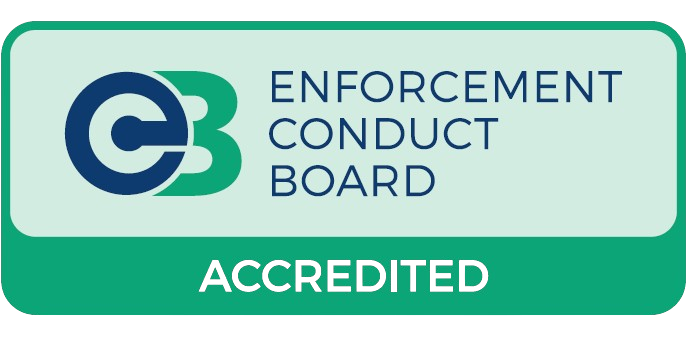Using Bailiffs to Collect Commercial Rent Arrears (CRAR)
CRAR is the statutory process that allows a commercial landlord to take control of a tenant’s goods to recover principal rent (and VAT/contractual interest). It replaced the old common law remedy of distress for rent in 2014 and is set out in the Tribunals, Courts and Enforcement Act 2007 (TCEA 2007) and the Taking Control of Goods Regulations 2013.
This guide is for general information and does not constitute legal advice. We act on your instructions and your lease terms.
What CRAR is (and what it replaced)
Definition
CRAR gives a landlord of commercial premises a statutory right to take control of a tenant’s goods to recover net unpaid rent without court proceedings, following a compliant Notice of Enforcement and timelines.
What it replaced
CRAR replaced distress for rent(the common‑law remedy). Procedures, safeguards and fee stages are now set by statute.
When it applies
There must be a written lease of wholly commercial premises, with at least 7 days’ net unpaid rent outstanding. Mixed residential use is excluded unless the residential part is lawfully separated.
Can I use CRAR on my tenancy?
Eligible
Written commercial lease; rent is payable for possession/use of the premises; arrears reach the minimum (7 days). Sub‑tenants may be directed to pay under s.81 (see below).
Not eligible
Licences or tenancies‑at‑will; dwellings or mixed‑use with residential; sums that are not rent (e.g., service charge, insurance, rates) unless strictly reserved as rent by the lease.
What counts as “rent”
Principal rent plus VAT and contractual interest (if any). Other sums are outside CRAR and may need recovery by claim or forfeiture.
How to instruct us (step‑by‑step)
Ready to proceed? Instruct CRAR here. For background and FAQs, see Commercial Rent Arrears Recovery (CRAR).
Section 81 notices to sub‑tenants
When you can use it
- There is a written commercial lease with net rent arrears (CRAR‑eligible).
- A lawful sub‑tenancy exists and the sub‑tenant pays rent to the tenant.
- The sum directed cannot exceed the rent due under the sub‑tenancy.
Effect on the sub‑tenant
- On service, the sub‑tenant must pay their rent to you instead of the immediate landlord.
- Payments made to you discharge the sub‑tenant’s liability to the tenant to the same extent.
- Non‑compliance can be enforced against the sub‑tenant’s goods to the extent of their rent liability.
Service & duration
- We draft and serve the notice (recorded post and/or personal service) with proof of service.
- The notice takes effect on receipt and continues until arrears are cleared, it is withdrawn, or the tenancy ends (e.g., surrender/forfeiture).
- We recommend sending a copy to the tenant and updating your rent account to reconcile sub‑rent receipts.
Section 81 can be used on its own or alongside attendance under CRAR. It is particularly effective where recoverable goods are limited but a paying sub‑tenant exists.
CRAR vs forfeiture – which route?
Advantages of CRAR
- No court claim required; statutory process with set fee stages.
- Preserves the lease – useful where you want the tenant to continue.
- Compliance fees are recoverable from the tenant on notice.
- Works alongside a payment plan via a Controlled Goods Agreement.
Limitations of CRAR
- Rent only (not most service charges/insurance unless reserved as rent).
- Requires 7 clear days’ notice before attendance.
- Unavailable for licences, dwellings or mixed residential use.
- Dependent on recoverable goods at the premises.
When to consider forfeiture
- Serious/recurring breach or where you want possession back.
- Where sums beyond rent are primary (service charge, repairs).
- Where goods are insufficient or the tenant has ceased trading.
CRAR FAQs
How much rent must be overdue before CRAR can be used?
What does “7 clear days’ notice” mean?
Can CRAR recover service charge or insurance?
Can I use CRAR on a licence?
Will CRAR end the lease?
Quick links
Last updated: . England & Wales only. This is not legal advice.



